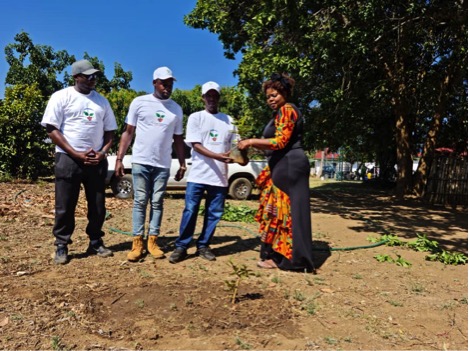|
Getting your Trinity Audio player ready…
|
By Hillary Munedzi
Zimbabwe’s forests are arguably the mainstay of tourism, especially in protected areas, which would in turn create jobs in rural areas, diversify and produce finished products that will improve environmental resilience in the face of climate change.
Speaking during the COMESA’s all-stakeholder climate meeting, Mr. Abedinigo Marufu, the Forestry Commission Zimbabwe director-general, said the country has managed to reduce the cutting down trees from 300 000 hectares last year to 262 000 and they are targeting to reduce the deforestation rate to 100 000 hectares.
“We are safeguarding our forestry through forestry extension programs and we are working with the Environmental Management Agency and Allied Timbers and 15 to 20 million trees are planted in Zimbabwe yearly. There is a 60 percent survival rate of these trees,” said Mr. Marufu.
Africa’s biodiversity could transform the continent’s economy, but at present many governments are scaling back on protection because of limited budgets needed for other pressing needs.
Developed powers have pledged to provide US$100 billion every year to developing countries to adapt to climate change but African countries have bemoaned the lack of commitment by wealthier nations since the funds take as long as five years for them to be disbursed.
“There is a slow pace of accessing readiness support. For example, it takes approximately five years to access a fund for adaptation and the issue of capacity gaps and systemic barriers have affected African countries, “said Herrick Mweya, Senior Climate Change officer in Zambia.
According to Global Watch, from 2001 to 2021, Zimbabwe lost 224ha of tree cover, equivalent to a 16 percent decrease in tree cover since 2000 and 87.4Mt of CO2 emissions. Manicaland was responsible for 63 percent of all tree cover loss between 2001 and 2021. The region has the most cover loss at 142Kha compared to other regions with an average of 22.4Kha.
Go Green Association of Zimbabwe has an ambitious plan to plant 3 million trees by 2024 by building green parks in the country’s 10 provinces.
“The green parks will solve some of our challenges which are being faced in the country and as the Cop 27 is being held in Africa in Egypt Sharm-El Sheik, I hope African leaders will bring the issue of deforestation to the table.
“But as Go Green, we are not folding our hands. We are building green parks in the country’s 10 provinces and the benefits of these green parks will include community education on environmental conservation benefits, job creation, carbon emission offset, preventing waterborne disease outbreaks such as cholera, reducing malnutrition in underprivileged communities and creating green community-based industries,” said Tino Warambwa, Chairman of Go Green Association of Zimbabwe who has vast experience in plant propagation and nursery management.
Africa’s unique diversity of wildlife and habitat has the potential to radically transform the continent’s economy. But at present, few of Africa’s protected areas are meeting their potential as engines for tourism growth and are underfunded by up to ten times the required level according to a report produced by the conservation organization, Space for Giants, and the UN Environment Programme.
